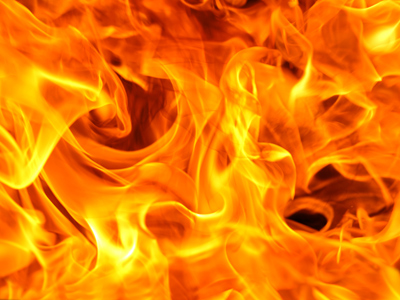
Ask the AI Tutor
Need help with Changing Materials? Ask our AI Tutor!
AI Tutor - Lucy
Connecting with Tutor...
Please wait while we establish connection

Need help with this topic? Ask our AI Tutor!
Burning will produce an irreversible change.
Changing Materials
Solids, liquids, and gases behave differently. In KS2 Science, you’ll explore how materials change when they are heated, cooled, or mixed together.
1 .
Which of the following is a sign of an irreversible change taking place?
A change in colour
A sudden change in temperature
Vigorous bubbling
All of the above
If you see all of these you can be sure than an irreversible change is taking place
2 .
If you were burning a candle, which of the following would be a reversible change?
The solid candle wax melts
The liquid wax in the wick burns
The flame produces smoke
All of the above
After the candle is blown out, the liquid wax cools and becomes solid again
3 .
Which of the following is an example of a reversible change?
Evaporation but not condensation
Condensation but not evaporation
Combustion
Evaporation and condensation
These reversible changes are a vital part of the water cycle
4 .
Heating will produce what sort of change?
An irreversible change
A reversible change
Either a reversible or irreversible change
Neither a reversible or irreversible change
Gentle heating can melt a substance - this would be a reversible change. Heating can also cook something, which would be an irreversible change
5 .
Which of these mixtures is not an irreversible change?
PVA glue mixed with Borax
Mixing salt and water
Plaster of Paris mixed with water
Bicarbonate of soda mixed with vinegar
Mixing PVA glue with Borax can create some exciting new materials, like slime! (Remember that Borax and Plaster of Paris should only be used when you are working with an adult)
6 .
Which of the following is not an example of an irreversible change?
A log of wood has been burned on the fire
A fruit smoothie has been frozen to make lollies
A mixture of flour, water and yeast has been baked into bread
A bicycle left out in the rain begins to rust
Things that have been frozen can be thawed or melted
7 .
Burning will produce what sort of change?
An irreversible change
A reversible change
Either a reversible or an irreversible change
Neither a reversible or irreversible change
Something which has been burnt can never be changed back
8 .
Which of the following is not an example of a reversible change?
A puddle turns to ice on a very cold winter's day
Sugar is dissolved in hot water
An egg is fried in a hot pan
A bar of chocolate has been left in the sunshine and has melted
Melting, freezing and dissolving are all examples of reversible changes. Cooking causes an irreversible change
9 .
What is a reversible change?
A material changes permanently into a new material
A material changes its feel or appearance, but it is still the same material
A material changes into a new material, but it can be changed back
A material stops existing
A material changes its feel or appearance, but it's still the same material and the change can be reversed (that is, changed back)
10 .
What is an irreversible change?
A material changes permanently into a new material
A material changes its feel or appearance, but it is still the same material
A material changes into a new material, but it can be changed back
A material stops existing
An irreversible change is also called a 'chemical' change
You can find more about this topic by visiting BBC Bitesize - Chemical reactions and reversible changes
**Unlimited Quizzes Await You! 🚀**
Hey there, quiz champ! 🌟 You've already tackled today's free questions.
Ready for more?
Ready for more?
🔓 Unlock UNLIMITED Quizzes and challenge yourself every day. But that's
not all...
not all...
🔥 As a Subscriber you can join our thrilling "Daily Streak" against other
quizzers. Try to win a coveted spot on our Hall of Fame Page.
quizzers. Try to win a coveted spot on our Hall of Fame Page.
Don't miss out! Join us now and keep the fun rolling. 🎉
**Unlimited Quizzes Await You! 🚀**
Hey there, quiz champ! 🌟 You've already tackled today's free questions. Ready for more?
🔓 Unlock UNLIMITED Quizzes and challenge yourself every day. But that's not all...
🔥 As a Subscriber you can join our thrilling "Daily Streak" against other quizzers. Try to win a coveted spot on our Hall of Fame Page.
Don't miss out! Join us now and keep the fun rolling. 🎉






